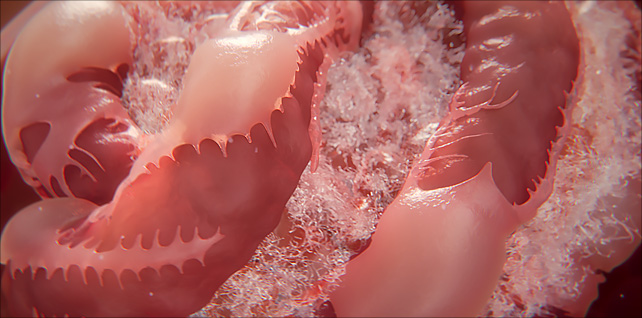
Diabetic nephropathy & chronic kidney disease
Feb 21, 2022A few frames from animation that depicts the progression of diabetic nephropathy, a driver of chronic kidney disease in people with diabetes.
Here in the glomerulus, the images show progressive damage to the tubules, damage to podocytes (including loss of them), and scarring as a result of mesangial cells excreting extracellular matrix.
The last image depicts contracted, granular kidneys from long-term hypertension.
Animation was created for client’s episode on chronic kidney disease and the relationship between type 2 diabetes and cardiovascular risk in patients with advanced CKD.
Tagged: anatomy art, biomedical communications, biotech, bowman’s capsule, chronic kidney disease, CKD, diatbetic nephropathy, digital health, extracellular matrix, glomerular disease, glomerular hyperfiltration, hybrid medical, medical animation, medical art, medical marketing, medical visualization, mesangial cells, Minneapolis Minnesota, nephrology, podocytes, scientific animation
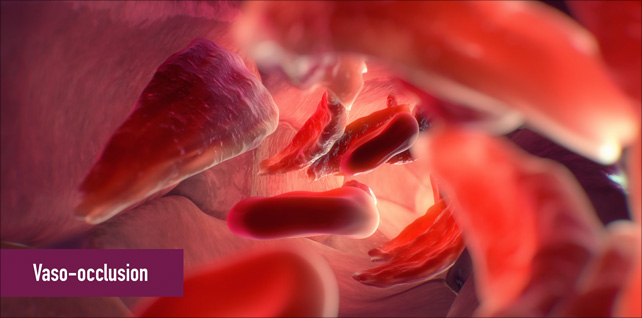
The pathophysiology of sickle cell disease
Jan 15, 2022Segment from a 4-minute animation that explores the pathophysiology of sickle cell disease and the progressive, tissue-damaging effects of chronic hemolysis and anemia.
Our assignment: visually depict several key critical aspects of the SCD story, such as hemoglobin S (HbS) polymerization, red blood cell sickling and tethering, vaso-occlusion, and chronic hemolysis.
Sickled red blood cells promote inflammation, obstruct the vasculature, injure the endothelium, and may lead to ischemic damage in vital organs.
Tagged: anemia, biology, biomedical communications, biotech, blood flow, HbS polymer formation, HbS polymerization, hemoglobin S, hemolysis, hybrid medical, intravascular hemolysis, medical animation, medical marketing, pharma, SCD damage, scientific animation, sickle cell, sickle cell anemia, sickle cell awareness, sickle cell disease, sickle cell warrior, vascular, vaso-occlusion, visual science
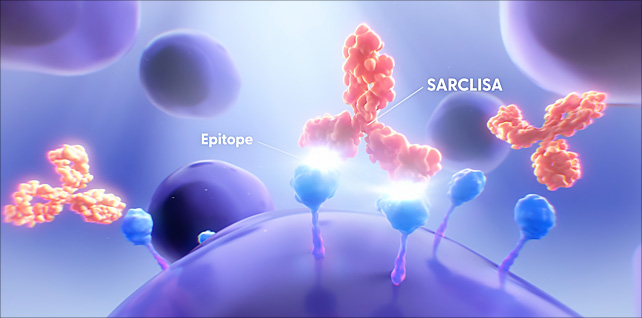
mAb targeting multiple myeloma
Feb 22, 2022Sequence from 5-minute MOA that provides insight and details for a monoclonal antibody (mAb) designed to induce programmed tumor cell death (apoptosis) and immunomodulatory activity.
For this mechanism of action video, our task was to create a science story that would depict several key features: how the mAb finds and binds to myeloma cells and exposes them for elimination, how it boosts cells of the immune system, and how this targeted immunotherapy can kill myeloma cells directly.
Tagged: antibody, biomedical communications, biotech, blood cancer, cancer, cancer immunotherapy, cancer treatment, CD38, hybrid medical, immunotherapy, leukemia, lymphoma, medical animation, medical marketing, monoclonal antibodies, multiple myeloma, myeloid, myeloma awareness, oncology, scientific animation, visual science
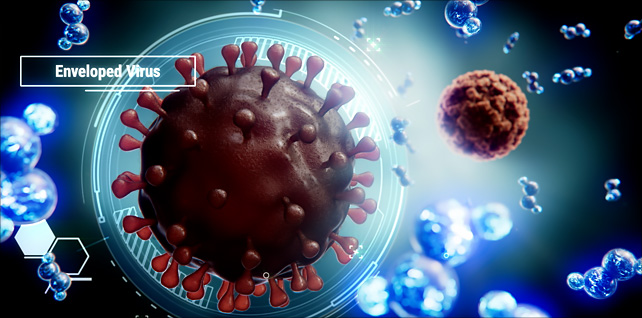
Attacking pathogens with biodefense technology
Feb 22, 2022Animation created for the Synexis BioDefense System, a cutting-edge device that converts naturally occurring oxygen and humidity in the air to Dry Hydrogen Peroxide (H2O2), otherwise known as DHP™.
This unique molecule works continuously to attack the mold, bacteria and viruses (including SARS-CoV-2) that hide in any type of indoor space.
Our job was to visualize the breakdown and conversion of particles to be converted into DHP, as well as show how DHP molecules are drawn to and destroy various types of viruses, bacteria and mold.
We collaborated closely with our client regarding how the DHP engages with (and destroys) each kind of pathogen, as well as behavior of subatomic particles in the breakdown-and-conversion process inside the catalyst space.
For the complete video, visit synexis.com
Tagged: bacteria, bioart, biodefense, continuous clean, DHP, Dry hydrogen peroxide, health & wellness, hybrid medical, Innovative technology, medical animation, medical marketing, medical visualisation, microbes, microbiology, mold, naturally safe, science, science art, science visuals, scientific animation, Synexis, virology, viruses, visual effects
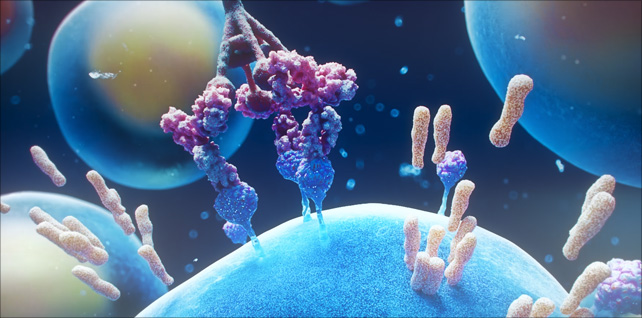
CD38 antibodies inducing cell death
Feb 20, 2022The monoclonal antibody has become instrumental for the treatment of multiple myeloma.
In this sequence, monoclonal antibodies are seen targeting CD38, a protein commonly expressed on the surface of cancerous plasma cells.
Activation of the complement system triggers the formation of pores in the cellular membrane, leading to cell death.
A goal for this sequence was to explore a visual approach that resembled a deep sea look & feel, including planktonic soft-bodied organisms and other invertebrate animals that live near the ocean floor.
Tagged: antibodies, antibody, antigen, biology class, blood cancer, cancer, CD38, CD38 antibodies, hybrid medical, immune system, mAb, medical animation, medical illustration, medical marketing, medical visualization, monoclonal, multiple myeloma, myeloid, pharmaceutical animation, science, science art, science visuals, scientific animation
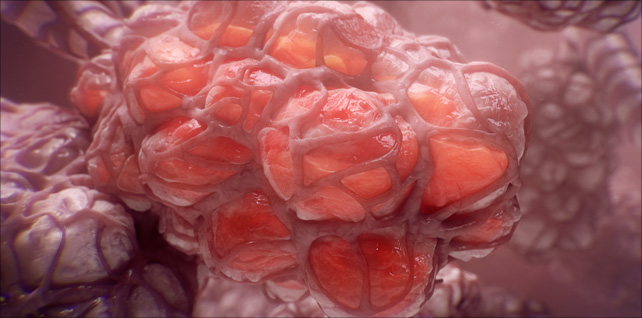
Pneumonia infection
Feb 20, 2022Deep in the lungs, we can see the clusters of tiny air sacs — the alveoli — becoming inflamed and filling with pus, making it difficult to breathe.
Pneumonia is an infection of the lungs caused by bacteria, viruses, or even fungi.
Tagged: alveoli, anatomy, biology, hybrid medical, influenza animation, lung anatomy, lung health, medical animation, medical marketing, medical visualisation, Minneapolis Minnesota, pneumonia, pneumonia animation, pneumonia awareness, Pneumonia Day, pneumonia sucks, pneumonia vaccination, pneumonia vaccine, pulmonary, science, science visuals, scientific animation
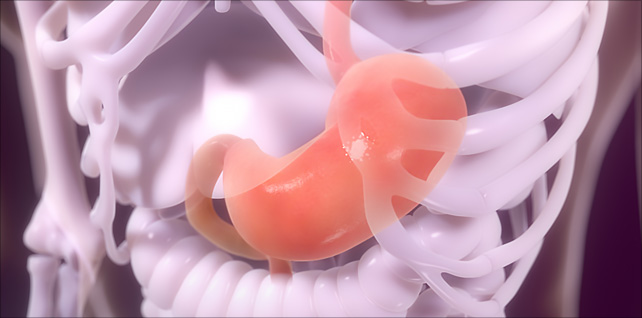
Medications for type 2 diabetes
Jan 12, 2022Patient education animations created for WebMD that explore common medications for type 2 diabetes.
Because each treatment works in a unique way, our task was to bring three medications to life, creating an easy-to-understand mechanism of action story for each science story.
The three medications highlighted on the WebMD website: Metformin, Dipeptidyl Peptidase-4 (DPP-4), and SGLT2 Inhibitors.
These are selected segments from the larger productions.
Tagged: biology class, diabetes, diabetes 2, diabetes awareness, diabetes community, diabetes life, diabetes prevention, dpp4 inhibitor, hybrid medical, medical animation, medical visualisation, metformin, patient education, science art, science visuals, scientific animation, sglt2 inhibitor, type 2 diabetes, visual effects
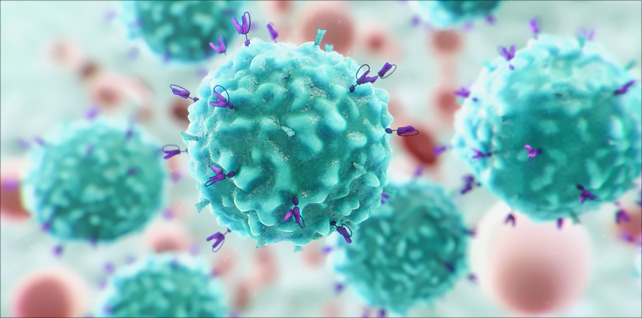
A CAR T-cell therapy targeting B-cell maturation antigen (BCMA)
Apr 21, 2022A few selected segments from a 6-minute animation created for a first-in-class B-cell maturation antigen (BCMA)-directed personalized immunotherapy called chimeric antigen receptor (CAR) T-cell therapy.
In this CAR T therapy, the T cells are engineered to target a protein called BCMA, which is found in abundance on multiple myeloma cells, but is absent from nearly all normal cells.
Tagged: (CAR) T-cell therapy, antigens, biology, biotechnology, cancer, cancer research, cancer treatment, CAR T, CAR T cell animation, CAR T therapy, CAR T-cell animation, car-t cell therapy, chimeric antigen receptor, chimeric antigen receptor animation, gene therapy, hybrid medical, immune health, immunotherapy, medical animation, Medical science, medical visualisation, pharma, scientific animation, T cells, visual science
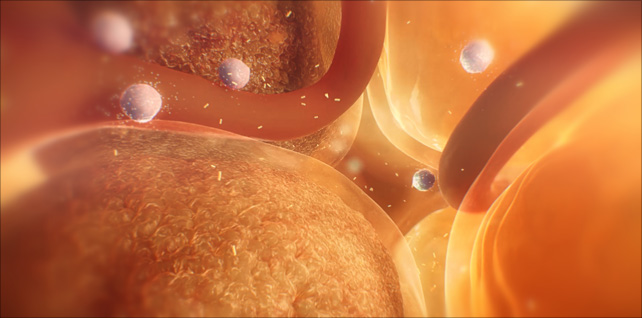
Fat cell enlargement & type 2 diabetes
Apr 22, 2022Fat cell enlargement in obesity is related to insulin resistance and type 2 diabetes.
In this sequence, we travel into the visceral fat and see an active environment – teeming with overstressed, damaged fat cells, vasculature, and immune cells.
Stress on these hypertrophic adipocytes results in lipid spillover (fatty acid release) into the circulation, as well as proinflammatory cytokine release and immune cell recruitment.
Tagged: adipocyte animation, adipocytes, adipose tissue disfunction, diabetes, diabetes 2, diabetes animation, diabetes prevention, fat cell animation, fat cell enlargement, fat cells, hybrid medical, hypertrophic adipocytes, hypertrophic adipose expansion, hypertrophic fat cells, medical animation, medical illustration, medical visualisation, scientific animation, type 2, type 2 diabetes
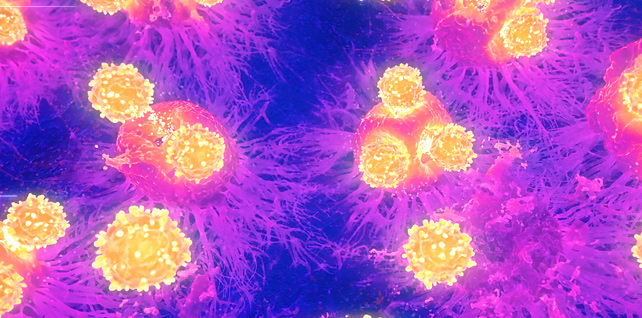
Cytotoxic T cells targeting tumor cells | immunotherapy animation
May 03, 2022A close-up fly-through of tumor cells, and the arrival of cytotoxic t cells intent on eradicating them. Activation and proliferation of cytotoxic T cells are critical for immune-mediated tumor destruction.
A key challenge we were given for this sequence: develop a rendering approach that mimics infrared thermal microscopy imaging techniques.
Researchers have been making advancements in understanding the thermal behavior of cells – for example, the ability to read the signatures of tumor cells due to their higher metabolism – in order to be used alongside existing histological analysis methods.
Tagged: biology, biomedical communications, biotechnology, cancer cells, cytotoxic T cells, fluorescence microscopy, hybrid medical, immune cells, immunology, immunotherapy, infrared, infrared (IR) microscopy, infrared imaging in biology, infrared spectroscopy, IR imaging, IR microscopy, Killer T cell animation, Killer T cells, medical animation, microspectroscopic animation, Minneapolis Minnesota, oncology, pharma, science visuals, scientific animation, T cells, thermal, thermal imaging, thermal microscopy, tumor cells, tumor death
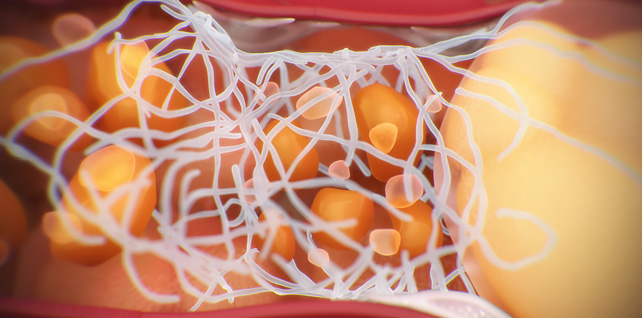
Non-alcoholic steatohepatitis (NASH) | NASH liver disease animation
May 16, 2022A few selected sequences we produced for a recent Medscape CME / ABIM MOC / CE symposium titled NASH 101: What You Need to Know Now
The full 2.5- minute animation was developed to be played as a visual aid when the moderator discussed epidemiology and pathogenesis.
We were asked to conceptualize and develop this visual science story. It provides insight into the pathophysiology of NAFLD and NASH, including the role of fatty acids, insulin resistance, and steatosis, as well as mitochondrial dysfunction, excess ROS production, and the stress put on the endoplasmic reticulum inside ballooning hepatocytes.
In addition, we depicted key attributes of the progression of non-alcoholic steatohepatitis (NASH) including bloated hepatocytes and the fat droplets accumulating inside, displaced cell organelles, lobular inflammation, and the scarring (fibrosis) that occurs as collagen fibers fill the spaces once cell death occurs.
In the last few years, nonalcoholic fatty liver disease (NAFLD) and nonalcoholic steatohepatitis (NASH) have become the most common causes of chronic liver disease worldwide. This epidemic is starting to parallel the epidemics of obesity and type 2 diabetes.
Tagged: biology, biomedical communications, cirrhosis, fatty acids, fatty liver disease animation, hepatocytes, hybrid medical, insulin resistance, lipotoxicity, liver animation, medical animation, medical marketing, NAFLD, NASH, NASH liver disease animation, non-alcoholic steatohepatitis, nonalcoholic fatty liver disease, obesity, science visuals, scientific animation, steatohepatitis, steatosis, type 2 diabetes
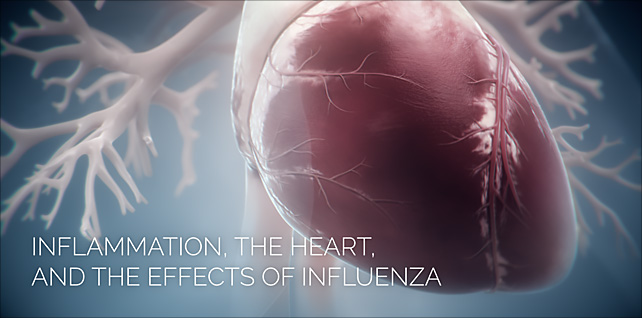
Inflammation, the Heart, and the Effects of Influenza
Mar 15, 2022Sequence from an animation that explores influenza, the body’s immune response to the virus, and how it may cause dangerous levels of inflammation throughout multiple organs systems of the body.
In this excerpt, we depict a plaque rupture and show the important role inflammation plays in the development of atherosclerotic plaques.
This is a sequence from a three-part production that provides insight into how older adults with existing conditions such as cardiovascular disease, respiratory illness, or diabetes may face a higher risk of severe complications when they are infected with the influenza virus.
Tagged: atherosclerosis, cardiac, cardiac arrest, cardiology, cardiovascular disease, flu, heart disease, heart disease awareness, heart failure, hybrid medical, hypertension, immune response, inflammation, influenza, medical animation, plaque, scientific animation, vaccines, virus, visual science
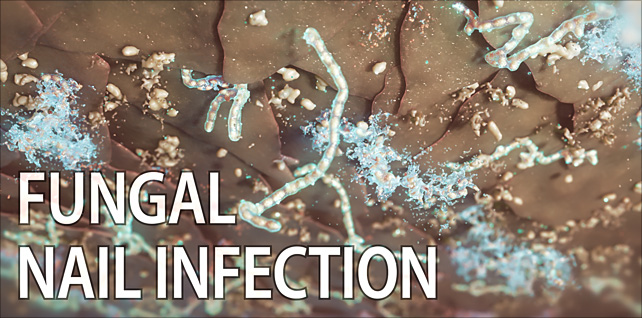
Onychomycosis & nail fungal disease
May 22, 2022This animation takes a closer look at a fungal infection of the toenail and the key attributes of its invasion, including discoloration and brittleness of the nail, striations and thickness of the nail plate, and ultimately, the presence and proliferation of fungi at the nail bed.
One of the more important aspects for this project was to create a highly detailed, diseased nail cross-section, including anatomically correct layers (dorsal, intermediate, and ventral). This would allow us to feature the delivery vehicle and transport of cosmetic and antifungal ingredients through the nail plate.
Additional key challenges for this piece included creating a 3D toe with diseased nail, particle simulations of the key anti-fungal solution ingredients and their pathway down to the nail bed, and the destruction of fungal species (including yeasts, dermatophyte molds, and non-dermatophyte molds) at the nail bed.
Trichophyton rubrum – the fungal species we see at the end – is the most common type of nail fungus.
Tagged: antifungal, cosmetic, dermatology, dermatophyte, fungal, fungal infection, fungal nails, fungus, houdini, hybrid medical, keratin matrix, medical animation, mold, nail bed, nail fungal disease, nail plate, nails, onychomycosis, pedicure, redshift, science, science visuals, scientific animation, toe fungus, toe fungus animation, toe fungus3D, toenail fungus, trichophyton, trichophyton rubrum, yeast